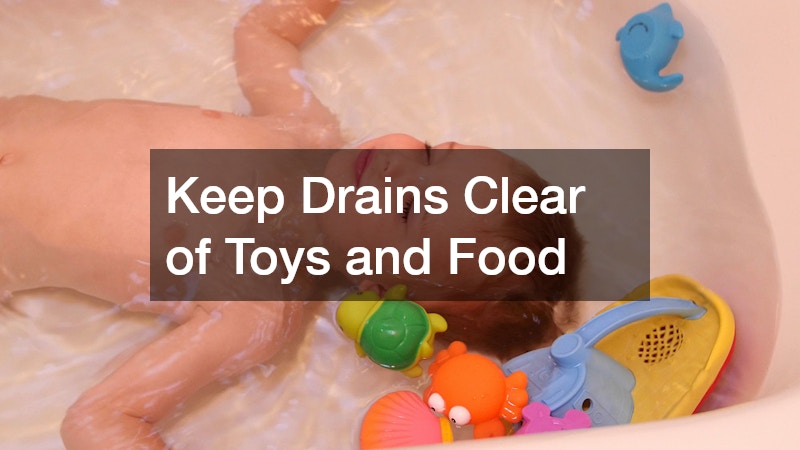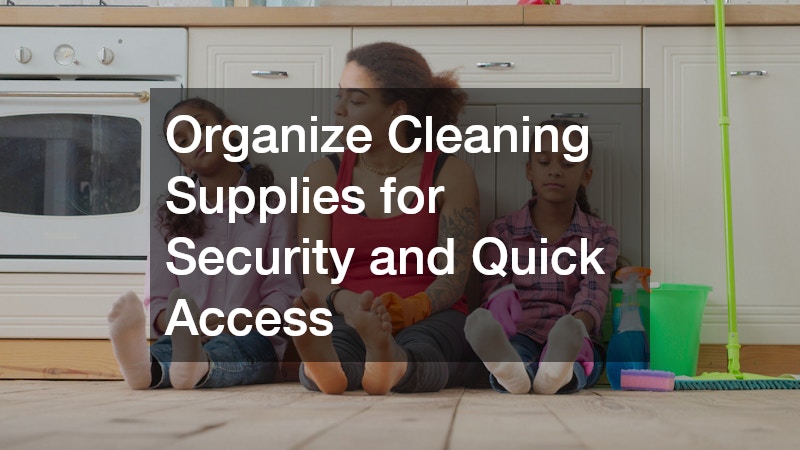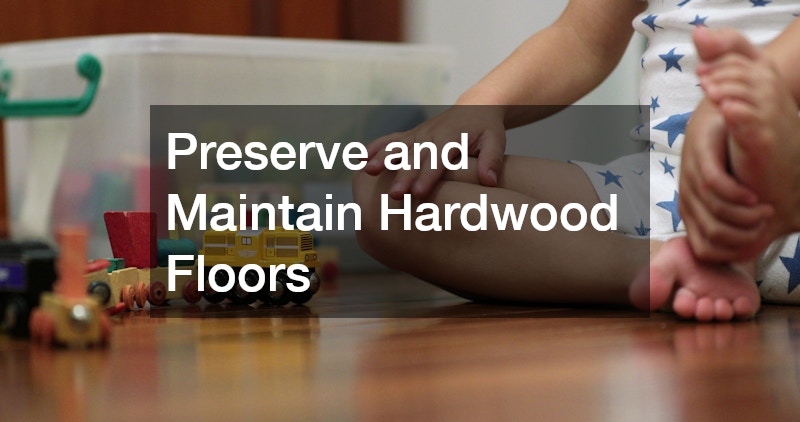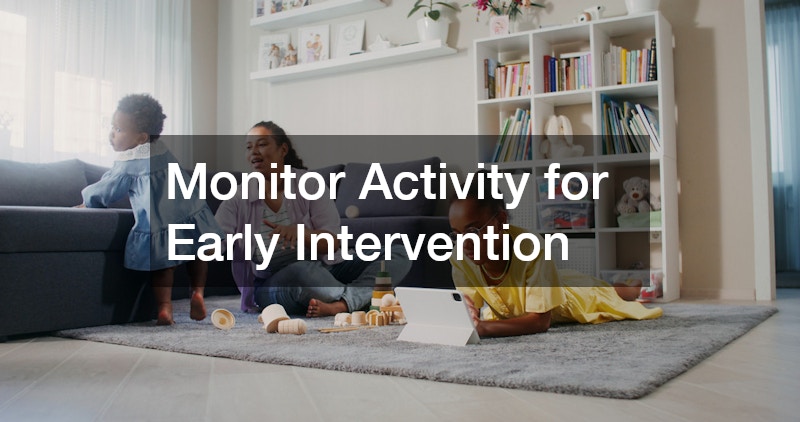Raising kids comes with its fair share of messes. From spilled juice to craft projects gone rogue, sticky fingerprints, muddy shoes, and bath time accidents, it can feel impossible to keep a home clean and organized. The trick isn’t trying to eliminate mess—it’s having systems, tools, and strategies that make tackling everyday chaos manageable. With smart planning, professional support, and a few clever tricks, parents can keep their home safe, functional, and even stylish while living with active kids.
This guide offers practical solutions for common household messes. Each section highlights a specific challenge and provides actionable tips parents can use immediately. Whether it’s protecting floors, keeping toys contained, preventing water damage, or monitoring problem areas, these strategies make cleaning faster, reduce stress, and keep your home looking and feeling great—even with little ones around.
Protect Outlets from Curious Fingers
Toddlers and preschoolers are naturally curious, and electrical outlets are often irresistible. They might insert toys or fingers, pull on cords, or unplug important devices, creating safety hazards and interruptions to daily life. Installing childproof outlets, tamper-resistant sockets, and cord management systems can drastically reduce accidents and stress.
Hiring local electricians ensures these safety measures are installed correctly. For example, electricians can add outlet covers in playrooms, kitchens, and bedrooms where children spend the most time. They can also install surge protectors to keep essential appliances like baby monitors, humidifiers, and nightlights functioning safely. Cord channels along walls prevent trips and accidental unplugging. Regular professional inspections catch worn wiring or loose outlets before they pose a hazard. With these preventative steps, children can explore safely, parents can feel confident about their home’s safety, and everyday cleaning and maintenance are less likely to be interrupted by electrical mishaps.
Keep Drains Clear of Toys and Food

Children frequently drop bath toys, hair ties, small snack pieces, or soap down sinks and tubs, causing clogs and slow drainage. Even seemingly small items like a single rubber duck or a handful of cereal can create a backup that leads to water damage, foul odors, or more extensive plumbing problems.
Scheduling clogged drain cleaning helps prevent these issues before they escalate. Parents can complement professional cleaning with preventive tools like mesh drain covers in sinks and bathtubs, or storage bags for bath toys. For instance, keeping all rubber ducks and foam letters in a mesh bag prevents them from slipping into the drain while still allowing water to pass through. Professionals remove stubborn buildup such as soap scum, hair, and food particles, ensuring water flows freely and reducing the risk of emergency repairs. Maintaining clear drains also keeps bathrooms and kitchens sanitary, allowing parents to clean up spills quickly and avoid costly water damage.
Keep Rugs Clean from Snacks and Muddy Shoes
Area rugs can quickly become magnets for messes in homes with children, especially in high-traffic zones like living rooms, playrooms, and entryways. Kids often eat snacks or drinks while sitting on the floor, leaving crumbs or sticky spills behind. Outdoor play can bring muddy footprints inside, and craft projects with markers, paint, or glue often end up creating stubborn stains. Over time, these messes not only affect the rug’s appearance but can also harbor allergens, bacteria, and odors, making regular cleaning essential to maintain both hygiene and a polished home look.
Professional area rug cleaners can deep-clean rugs, removing dirt, stains, and allergens that vacuuming alone can’t tackle. For example, a playroom rug covered in juice stains and goldfish crackers can be restored with spot treatments and thorough cleaning. Some professionals also apply protective coatings that repel spills and make future cleaning easier. Parents can maintain rugs by wiping up small spills immediately, rotating rugs to reduce uneven wear, and using washable mats in high-traffic areas. Proper rug care improves air quality, keeps kids safe to sit and play on the floor, and ensures that your home continues to feel fresh and welcoming.
Organize Cleaning Supplies for Quick Access

Quick access to cleaning supply tools can make a huge difference in managing everyday messes, especially in a home with young children. Spilled milk at breakfast, scattered crayons from an art project, or snack crumbs on the couch or floor often require immediate attention to prevent stains, sticky residue, or lingering odors. Having cleaning supplies organized and within reach allows parents to respond instantly, reducing the risk of permanent damage to furniture, flooring, or rugs.
For example, parents can maintain a small caddy in the kitchen for food and drink spills, another in the bathroom for toothpaste or bath splashes, and one in the playroom for arts-and-crafts messes. Each kit can contain microfiber cloths, child-safe sprays, and paper towels. Portable caddies allow parents to move supplies from room to room efficiently. Organizing by function ensures the right product is always on hand, which saves time and reduces frustration. Keeping cleaning supplies accessible empowers parents to address messes as they occur, preventing minor issues from escalating into major cleanup projects and ensuring the home stays safe and hygienic for children.
Protect Walls from Crayon and Marker Damage
Walls are a natural target for kids expressing their creativity—or sometimes mischief. Crayon marks, marker streaks, and smudges near desks, tables, or play areas can accumulate quickly. Hiring residential painters to apply durable, washable finishes can make cleaning these surfaces much easier. For example, parents can choose semi-gloss or satin paint in playrooms and bedrooms, which allows crayon or marker stains to be wiped off without damaging the surface. Bathrooms and kitchens can benefit from moisture-resistant paint that prevents water stains. Professionals can also touch up scuffed trim and baseboards, giving the home a polished, clean appearance. With proper painting, parents spend less time scrubbing and repairing surfaces, maintaining a stylish and tidy home environment while allowing children to explore creatively.
Preserve and Maintain Hardwood Floors

Hardwood floors are beautiful and add warmth to any home, but they can be easily scratched, dented, or stained by toys, muddy shoes, spilled drinks, or craft materials. Children often drag furniture, roll toy cars, or drop building blocks, all of which can leave marks on even the most well-maintained floors. Spills from juice, milk, or art supplies can seep into the wood if not cleaned promptly, leading to discoloration or lasting damage. Protecting hardwood floors requires consistent care and strategic prevention.
Parents can use mats in entryways to trap dirt, area rugs in play spaces, and furniture pads under toys or chairs to prevent scratches. Spot cleaning spills immediately prevents staining, and routine sweeping removes dirt and debris before it damages the wood. Professional maintenance, such as polishing or refinishing worn areas, restores the floor’s luster. For instance, if a child drops a juice cup near a high-traffic hallway, immediate clean-up combined with regular care ensures the floor remains in top condition. Maintaining hardwood floors protects your investment, keeps your home looking clean, and provides a safe space for children to play.
Upgrade High-Traffic Areas with Durable Flooring
For areas prone to spills, scratches, or heavy use, installing luxury vinyl plank flooring provides a resilient, low-maintenance solution that can withstand the daily chaos of family life. Playrooms, kitchens, mudrooms, and even bathrooms often see constant foot traffic, dropped toys, spilled drinks, and craft messes. Luxury vinyl plank is designed to resist water, stains, and scratches, making it ideal for spaces where children frequently play or eat.
Parents can use LVP in playrooms, kitchens, mudrooms, or bathrooms where children often spill snacks, water, or craft supplies. Its water-resistant surface allows quick wipe-downs, while its scratch-proof design handles dropped toys or furniture. LVP is comfortable for kids to play on and reduces noise from running or jumping. Installing durable flooring in key zones minimizes stress for parents, keeping the home functional and stylish even with frequent messes. It’s an investment that pays off by combining practicality, durability, and aesthetic appeal, making it easier to manage high-traffic, child-heavy areas.
Keep Stairs and Railings Safe
Spilled drinks, scattered toys, and wet shoes make stairs some of the most hazardous areas in homes with children. Toddlers learning to climb, older kids running up and down, or even pets navigating the steps can increase the risk of slips, trips, and falls. Well-maintained railings are essential not only for safety but also for giving children a sense of stability as they move between floors.
For example, installing sturdy railings on both sides of a staircase provides stability for toddlers learning to climb. Adding small storage hooks or bins along stair landings keeps toys off steps, reducing tripping hazards. Regular inspections ensure that screws and fasteners remain secure. Clean, functional railings give parents peace of mind, allowing kids to move safely between floors while preventing messes from spreading. Maintaining stairways and railings reduces accidents, simplifies cleaning, and creates safer pathways throughout the home.
Contain Outdoor Play Areas
Children and pets can easily track mud, sand, leaves, and other outdoor debris indoors, turning every play session into a cleanup challenge. Backyard adventures like digging in a sandbox, running through sprinklers, or playing soccer often result in muddy footprints on floors, scattered leaves, and even tiny rocks inside the house. Installing a custom fence helps contain these activities within designated play zones, keeping the rest of the yard—and your home—cleaner and more manageable.
For instance, a fenced-off backyard area can serve as a sandbox or bike path, keeping messy activities away from the house. Professionals ensure the fence is secure, durable, and fits the yard’s layout. By confining outdoor activity to designated spaces, parents prevent dirt and debris from spreading indoors while giving kids freedom to play safely. Fencing also adds privacy and organizes the yard for multiple uses, making cleanup easier and outdoor time more enjoyable for the whole family.
Monitor Activity for Early Intervention

Even with the best strategies in place, kids will inevitably make messes—spilled drinks, scattered toys, or craft supplies ending up in unexpected places. Installing home surveillance cameras allows parents to monitor play areas and spot potential problem zones before they escalate into larger cleaning challenges. For instance, a camera in the playroom might reveal that children consistently leave snack crumbs near a particular rug or that paint and markers are frequently used on a certain table.
With this information, parents can proactively place mats, storage bins, or protective covers exactly where they are needed most. Cameras also provide peace of mind when parents are in other rooms or busy with chores, as they can quickly intervene if a spill or unsafe behavior occurs. In households with multiple kids, monitoring can help identify patterns, such as which areas are most prone to muddy shoes or wet spills, allowing for more strategic placement of furniture. Using surveillance as a tool for prevention rather than punishment empowers parents to maintain a cleaner, safer, and more organized home while still letting children play freely.
Parenting comes with constant messes, from spilled drinks and scattered toys to muddy footprints and craft chaos, but practical strategies and professional help make these challenges far more manageable. By implementing targeted solutions, parents can address each mess before it escalates into a bigger problem. From protecting electrical outlets to prevent accidents, ensuring drains stay clear of bath toys and food particles, and keeping rugs and flooring clean and durable, every approach targets a specific daily challenge.
Thoughtful monitoring and preventative measures, combined with accessible cleaning systems, mean that homes remain functional, safe, and organized, even with active children creating chaos every day. These strategies not only maintain the appearance of the home but also reduce stress, improve efficiency, and give parents peace of mind knowing that everyday messes are under control.
Implementing these tactics saves time, reduces stress, and keeps a home safe, functional, and attractive. By combining preventative measures, professional support, and everyday habits, parents can maintain control of their home environment while still allowing children the freedom to play, explore, and create. A clean, organized, and well-protected home ensures both family comfort and long-term durability, even in the busiest households.



